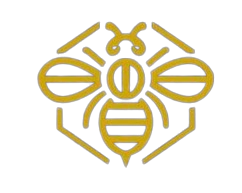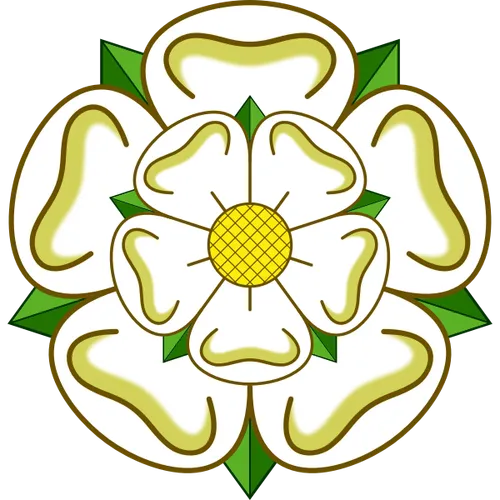The Random Bee Truffle Tree Initiative: A Sustainable Solution for the Environment
The Random Bee Truffle Tree Initiative: A Sustainable Solution for the Environment
At The Random Bee, we are deeply committed to creating a positive impact on the planet. Our Truffle Tree Initiative is one of the many ways we're working to enhance biodiversity, combat climate change, and promote sustainability. By planting truffle trees and incorporating hazelnuts into our project, we are not only cultivating one of nature’s most luxurious and unique ingredients but also contributing to a healthier, greener world. Here’s how our initiative helps the environment and why it matters.
What is the Truffle Tree Initiative?
Truffle trees are a vital part of our mission to restore and protect the environment. In partnership with the wild hazelnut tree, The Random Bee is planting a combination of oak, hazel, and other truffle-supporting trees in carefully selected areas. These trees form the perfect environment for truffles, a type of fungi that grows symbiotically with tree roots. The hazelnut trees play a particularly important role, as their roots are one of the best partners for truffle fungi.
The Truffle Tree Initiative goes beyond planting trees; it’s about creating a sustainable, long-lasting ecosystem where the benefits of this cultivation can be felt for generations to come. By planting truffle trees alongside hazelnuts, we’re fostering a more diverse and resilient ecosystem that offers significant environmental benefits.
The Role of Hazelnuts in the Truffle Tree Initiative
Hazelnut trees are key partners in the growth of truffles. Truffles thrive when they form a symbiotic relationship with specific tree roots, and hazelnuts are one of the best trees for supporting this unique fungi. Here's why hazelnut trees are so important to our Truffle Tree Initiative:
1. Supporting Truffle Growth
Truffles, particularly Tuber melanosporum (the black truffle), require a host tree to grow, and hazelnut trees are among the best partners. The fungi and tree exchange nutrients through their roots, forming a mycorrhizal relationship that benefits both organisms. Hazelnuts are a highly effective companion tree for truffles, creating the right conditions for the fungi to thrive.
As we plant hazelnut trees alongside other truffle-supporting species like oak, we’re boosting our chances of cultivating high-quality truffles while enriching the soil in the process. This helps create a biodiverse and thriving ecosystem for wildlife and future generations.
2. Enhancing Biodiversity
In addition to supporting truffle growth, hazelnut trees also play a role in boosting local biodiversity. These trees attract a variety of pollinators, including bees, butterflies, and other beneficial insects, which are vital for ecosystem health. By planting hazelnuts alongside other trees, we are creating a rich habitat that supports wildlife, improves soil quality, and fosters a thriving environment for both plant and animal life.
Hazelnuts also produce nuts that serve as a food source for local wildlife, further contributing to a balanced and healthy ecosystem. The presence of these trees attracts various species of birds, squirrels, and small mammals, all of which play essential roles in maintaining the natural equilibrium of the land.
Why Truffle Trees and Hazelnuts Help the Environment
1. Restoring Soil Health
Truffle trees and hazelnut trees work together to restore and maintain healthy soil. Through their mycorrhizal relationship, the fungi and tree roots improve the soil’s structure, increase its nutrient content, and enhance water retention. This leads to healthier, more fertile soil that benefits other plant species in the area. By planting these trees in nutrient-poor soils, we are helping to restore degraded land and promote long-term soil fertility.
2. Encouraging Biodiversity
Both truffle trees and hazelnut trees provide habitats for a variety of wildlife, enriching the local biodiversity. As these trees mature, they create an ecosystem that supports insects, birds, and small mammals, many of which rely on these trees for food and shelter. The variety of species attracted to these areas strengthens the resilience of the ecosystem, helping to preserve natural balance and mitigate the effects of environmental stressors such as climate change.
3. Carbon Sequestration
Trees, including hazelnuts and other truffle-supporting species, play a critical role in reducing carbon dioxide levels in the atmosphere. Through photosynthesis, trees absorb CO2 and store carbon in their roots, trunks, and branches. By planting more trees as part of the The Random Bee Truffle Tree Initiative, we are helping to sequester carbon and reduce the overall levels of greenhouse gases in the atmosphere, combating climate change.
4. Sustainable Land Use
Truffle and hazelnut cultivation is a sustainable land use practice. These trees are low-maintenance, require fewer resources, and help preserve soil health without the need for intensive farming methods. Unlike monocropping, which depletes the soil and can lead to environmental degradation, planting truffle trees and hazelnuts in a complementary system creates a sustainable cycle that benefits the land and surrounding wildlife. This helps to preserve the integrity of the landscape, prevent soil erosion, and ensure that the land remains productive for future generations.
The Random Bee’s Commitment to Sustainability
At The Random Bee, sustainability is at the heart of everything we do. Our Truffle Tree and Hazelnut Initiative is just one of the ways we're helping restore the environment. Through this project, we are not only cultivating a luxurious and unique ingredient but also creating a more biodiverse, resilient, and sustainable landscape.
We are passionate about making a real difference in the world. We believe that by planting truffle trees and hazelnuts, we can make a tangible impact on the planet. This initiative aligns with our broader goal to promote eco-friendly, sustainable farming practices and to inspire others to take action in their own communities.
How You Can Get Involved
The Truffle Tree and Hazelnut Initiative is just one way we’re working to improve the planet, but we need your help to expand this impact. Whether you’re an environmental advocate, a nature lover, or someone who simply cares about sustainability, there are many ways you can support our efforts:
- Support Our Products: By choosing The Random Bee’s sustainable products, you’re directly contributing to the funding of our environmental initiatives, including the Truffle Tree and Hazelnut Project.
- Spread the Word: Share the message of sustainability and the importance of biodiversity with your friends and family. The more people who are aware, the bigger impact we can have together.
- Plant Your Own Trees: Get involved by planting trees in your own community or garden. Every tree planted makes a difference.
Conclusion: Planting for the Future
The Random Bee’s Truffle Tree and Hazelnut Initiative is more than just about growing truffles—it’s about creating a lasting, positive impact on the environment. By planting truffle trees alongside hazelnuts, we are restoring soil health, enhancing biodiversity, and helping to combat climate change. Together, we can build a more sustainable future by fostering healthier ecosystems that benefit not only wildlife but also future generations.
Join us in planting for a greener, wilder future. Support our Truffle Tree and Hazelnut Initiative, and let’s work together to nurture the planet and create a legacy of sustainability.






